2.1: The Revolutionary Era and the Declaration of Independence
- Page ID
- 125852
Standard 2.1: The Revolutionary Era and the Declaration of Independence
Apply knowledge of the American Revolutionary period to determine the experiences and events that led the colonists to declare independence; explain key ideas about equality, representative government, limited government, rule of law, natural rights, common good, and the purpose of government in the Declaration of Independence. (Massachusetts Curriculum Framework for History and Social Science) [8.T2.1]
British attempts to assert tighter control over its North American colonies and the colonial resolve to pursue self-government led to a colonial independence movement and the Revolutionary War. (AP U.S. History Key Concept) [3.1]
FOCUS QUESTION: What Key Ideas are the Foundations of United States Government?
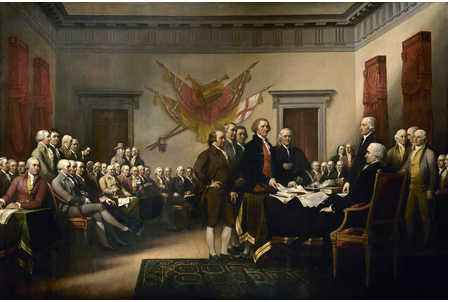
Drafted by Thomas Jefferson, edited by Benjamin Franklin and John Adams, and adopted by the Continental Congress on July 4, 1776, the Declaration of Independence consists of 1,320 of the most famous words and phrases in history:
- "When in the course of human events"
- "We hold these truths to be self-evident"
- "All men are created equal"
- "Life, liberty and the pursuit of happiness"
- "The consent of the governed"
The Declaration asserted that all men have "inalienable rights" that had been violated by a "long train of abuses and usurpations" committed by the king and government of England. Listing the laws and acts that the colonists felt were intolerable, the Declaration stated in no uncertain terms that people had a right to cut ties with a government that they believe is unjust.
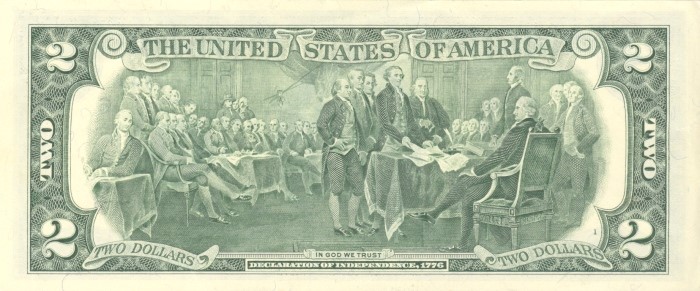
2.1.1 INVESTIGATE: The Seneca Falls Convention and the Declaration of Sentiments (1848)
The Seneca Falls Convention was organized in western New York in 1848 by Elizabeth Cady Stanton, Lucretia Mott, and a collection of Mott's fellow Quakers.
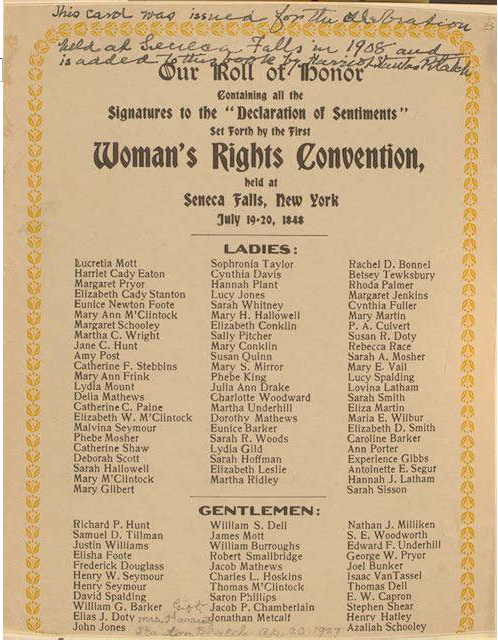
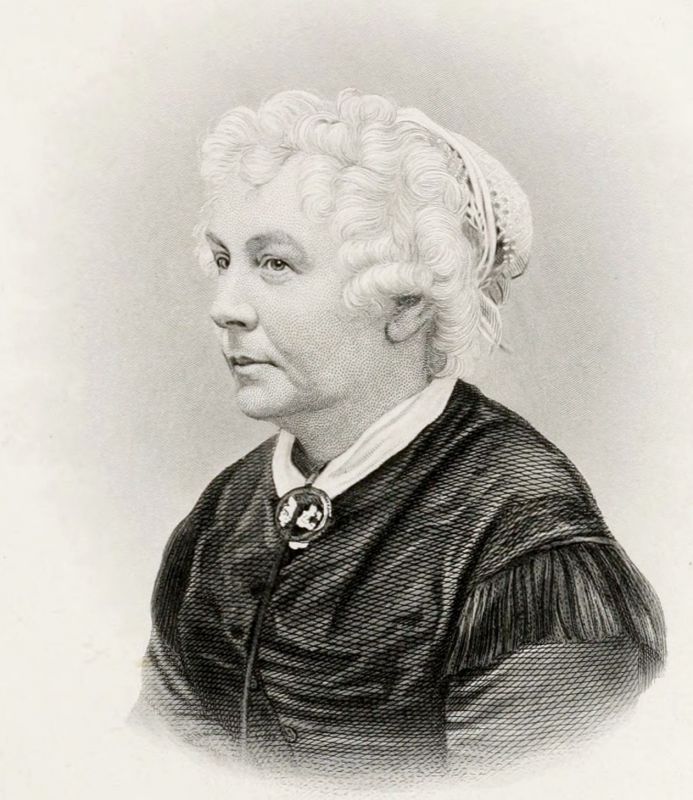
The Declaration of Sentiments provides teachers and students with opportunities to compare and contrast the issues that led the colonists to declare independence from England with the events and issues that led women to declare their rights as equal members of society. The Timeline of Women's Rights in Early America (National Women's History Museum) offers an overview of the status of women in early America.
Teachers from different subject fields can integrate the Declaration of Sentiments in curriculum and instruction (submitted by Sharon Edwards):
- History teachers — This is as important a document as the one it was modeled on and ought to be taught in the same time frame as the teaching the Declaration of Independence, for it is a Declaration of Independence—a voice of resistance to what is wrong and a demand for equality. Also, consider exploring the role of Frederick Douglass and other male advocates for change who took the women seriously and supported their goals and desires.
- English teachers — Read and record the Declaration of Sentiments in kid-friendly vocabulary so the language is accessible to students whose level and knowledge of English need this material translated into more understandable terms. The process by which women became voters is a compelling story. In the lives of students there will be issues parallel to women's rights that occasion disagreement and that may, in 100 years, be seen as the same kind of wrongheaded thinking. Maybe that issue is students having no voice in school policies, schedules, instructional tracks kids are assigned to, disciplinary procedures, or length of the school day and school year. At some future point these exclusions will seem unwarranted and as ridiculous as the view of women was in the mid-1800s.
- Math teachers — We can look at the long history of change of heart and mind and think about the changes to society that might have come about with much sooner adoptions of what we consider to be unquestionable rights—the opposite of what women had then. Time, resistance, inertia, propulsion, energy transfer (yes, I recognize that these are terms describing physics that are quantifiable; the same forces are affecting students' lives now as they wish they had voices in making changes to schools and the way learning happens, and are told always, no, you are not capable of doing the things you want to do because you are too young). Math words are everywhere: change— implying more than what already exists of some things and less than that of others— not capable, too young, not reliable or trustworthy enough.
- All teachers — Consider who you are and why. Those historical doers set the path. Now, we could be history-setting doers by rethinking the ways learning happens, the big ideas we feature in the content and how much we teach about equity and students' rights. In math and science, are you featuring the contributions of women and immigrants with the curriculum and concepts? In English and history, are you connecting these histories to students' lives and asking for their writing of their ideas, positions, and platforms for change?
Online Resources for the Declaration of Sentiments and Women's Rights in Early America
- Seneca Falls Convention, Learning Plan, National Women's History Museum
- Seneca Falls Declaration, Learning Plan, Teaching American History Project, Windham (Connecticut) Public Schools
- From the Declaration of Independence to the Declaration of Sentiments, National Women's History Museum
- Suffering for Suffrage, Learning Plan
- She Votes! Podcast series hosted by journalists Ellen Goodman & Lynn Sherr, released in 2020 for the 100th anniversary of the 19th Amendment
2.1.2 UNCOVER: Eleanor Roosevelt and the Universal Declaration of Human Rights
A political activist throughout her life, Eleanor Roosevelt worked for women's rights and the end of discrimination and poverty in the nation and the world. She was a diplomat, active internationally after World War II in promoting peace and freedom for all people. She was a prolific writer, authoring a six-days-a-week newspaper column titled My Day that ran from December 30, 1935 to September 26, 1962. At its height, the My Day column appeared in 90 newspapers nationwide with a readership of over four million people. Learn more about her expansive political career: Eleanor Roosevelt, First Lady and Citizen Activist.
Eleanor Roosevelt has been called the "First Lady of the World." One of her most important achievements was inspiring the writing of the Universal Declaration of Human Rights.
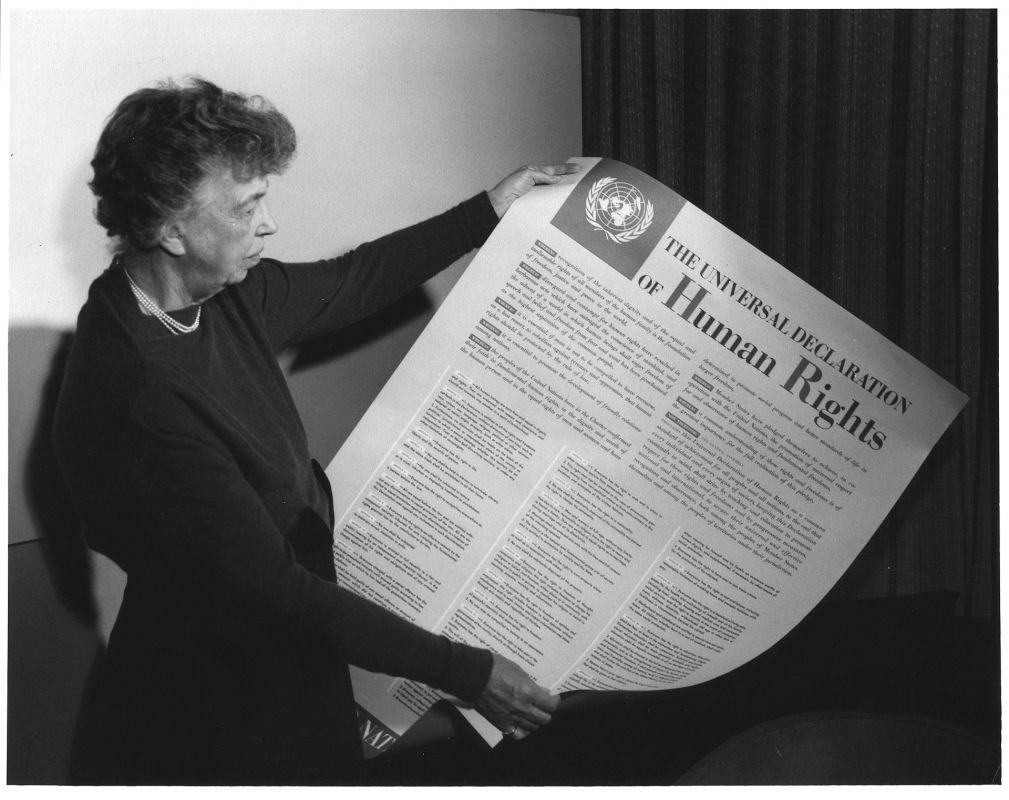
Adopted by the United Nations in 1948, the Universal Declaration of Human Rights consists of 30 articles listing the basic rights that every person anywhere on Earth should have. The Universal Declaration was a direct response to the horrors of atrocities of World War II. The opening to its Preamble reads: "Whereas recognition of the inherent dignity and of the equal and inalienable rights of all members of the human family is the foundation of freedom, justice and peace in the world" (United Nations).
As summarized in National Geographic Magazine (2008), the Declaration stated:
- All human beings are born free (Article 1).
- No one shall be subjected to torture or to cruel, inhuman or degrading punishment (Article 5).
- No one shall be held in slavery or servitude (Article 4).
- Everyone has the right to rest and leisure (Article 24).
- Everyone has the right to freedom of thought, conscience and religion (Article 18).
- Motherhood and childhood are entitled to special care and assistance (Article 25.2).
- Everyone has the right to education (Article 26.1).
- Everyone has the right to participate in the cultural life of the community, to enjoy the arts and to share in scientific advancement and its benefits (Article 27.1).
2.1.3 ENGAGE: What Do Other Declarations of Independence Declare?
Other declarations in United States history and world history include:
- Mashpee Wampanoag Declaration of Independence (1833). Select Petition, 1833 to view the document.
- Texas Declaration of Independence (1836)
- Declaration of Sentiments (1848)
- A Declaration of Liberty by the Representatives of the Slave Population of the United States of America (1858)
- Farmers Declaration of Independence (1873)
- United Steelworkers Declaration of Independence (1936)
- Declaration of Independence of the Democratic Republic of Vietnam (1945)
- Universal Declaration of Human Rights (1948)
- A Declaration of Independence of Cyberspace (1996)
- United Nations Declaration on the Rights of Indigenous Peoples (2007)
- Dorothea Dix Memorial to the Massachusetts Legislature
- Frederick Douglass "The Meaning of July 4th for the Negro" speech
- I Have a Dream Speech, Dr. Martin Luther King, Jr.
- Fourth of July Address at Independence Hall, John F. Kennedy


